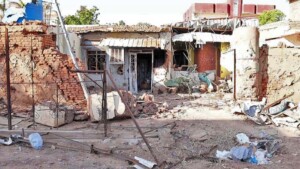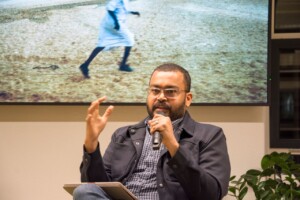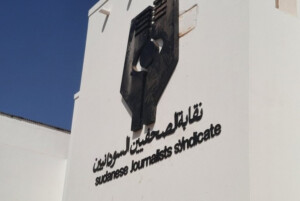‘Sudan, Egypt have to accept Ethiopian Renaissance Dam’: expert
The Grand Renaissance Dam currently being built at the source of the Blue Nile in Ethiopia has become a reality that Sudan and Egypt have to live with, says Dr Salman Mohamed Salman, expert in international water policies.
In an interview with Radio Dabanga’s Milafat Sudania, broadcast on Saturday, Dr Salman stated that Ethiopia completed redirecting of the Blue Nile to its natural course in December, after it had completed the concrete bases for the construction of the Dam.
The Grand Renaissance Dam currently being built at the source of the Blue Nile in Ethiopia has become a reality that Sudan and Egypt have to live with, says Dr Salman Mohamed Salman, expert in international water policies.
In an interview with Radio Dabanga's Milafat Sudania, broadcast on Saturday, Dr Salman stated that Ethiopia completed redirecting of the Blue Nile to its natural course in December, after it had completed the concrete bases for the construction of the Dam.
The water policies expert cited the “weak reaction of both Egypt and Sudan as a proof of the acceptance of this reality.”
Yet he added that the “Renaissance Dam has on the other hand imposed a new reality. The Nile waters will not be managed tumultuously any more, but rather through cooperation by the various stakeholders.
“All projects set up in the Nile Basin used to be special projects set up by the individual countries,” Salman said. “They ignored the fact that cooperation regarding the Nile waters will benefit us all. We've learned from the Renaissance Dam experience that agreeing on cooperation is crucial.”
Accord signed
On 29 December, Ethiopia, Egypt, and Sudan signed a document including several agreements on the Grand Renaissance Dam in Khartoum.
The Sudanese Minister of Foreign Affairs, Dr Ibrahim Ghandour, described the document as ‘historic’. He said that the three countries reached an agreement on the consultancy firms that will conduct technical studies on the mega-power project, noting that the French Artelia and BRL groups have been selected to undertake the dam impact studies.
Africa’s largest dam
In 2013, Ethiopia began diverting the Blue Nile to build the 6,000 MW dam which, with a capacity of 74 billion cubic metres, will be Africa’s largest when completed in 2017. The costs of the construction of the 1,780-metre-long and 145-metre high dam have been estimated at $4.2 billion.
From the start, Cairo strongly protested the construction of the dam. It is concerned that the dam could reduce its quota of 55.5 billion cubic meters of the Nile water, further increasing its water shortages. Ethiopia however maintains that the dam is primarily built to produce electricity and will not harm Sudan and Egypt.
In March, the three riparian states signed a declaration of principles on the dam project that tacitly approved the construction of the dam but called for technical studies aimed at safeguarding the water quotas.
In September last year, a panel of experts proposed a research into the project's impact on Sudan and Egypt’s water quota, and another into the dam’s ecological, economic and social impacts on the two countries.
A new round of talks is scheduled in the first week of February, aimed at accomplishing confidence building measures between the three countries.











 and then
and then